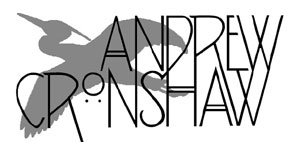
- Andrew Cronshaw website -
- Andrew Cronshaw MySpace -
- Cloud Valley Music website -
- Andrew Cronshaw website -
- Andrew Cronshaw MySpace -
- Back to Reviews Introduction page -
Written in
fRoots
issue 259/260, 2005
JOHAN HEDIN
Innersta Polskan
Drone DROCD038 (2004)
JOHAN HEDIN & GUNNAR IDENSTAM
Låtar
Caprice CAP 21733 (2004)
BAZAR BLÅ
Nysch
Xource XOUCD 140 (2004)
The playing of the Swedish keyed fiddle, the nyckelharpa, nearly died out in the
twentieth century but, cherished by just a handful of players in Uppland during
the thin period, over the past couple of decades it has blossomed as never
before. Johan Hedin is one of today’s leaders in developing extraordinary
technique on a range of versions of the instrument, some of which as designer
and maker he has developed himself, and in taking it into new musical worlds and
associations. He’s also one of the most prolific in terms of record releases.
Here are three, featuring him solo, in duet and in trio.
On Innersta Polskan, his second solo
album, comprising seven of his own compositions, he uses four types of
nyckelharpa – a soprano, tenor and octave, all of which have multiple stringing
with sympathetic strings, and a smaller, simpler four-string ‘lute-nyckelharpa’.
Hedin’s compositions, while looking outward and moving the tradition onward, are
very strongly shaped by it; much of the Nordic bowed-strings tradition is of
solo playing and, apart from two tracks where he’s joined by Fredrik Gille’s
percussion, this album is entirely solo nyckelharpa. But the instrument lends
itself not only to drones but also to chording and counterpoint lines, and the
bigger nyckelharpas cover a wide pitch range, so his solo arrangements can sound
like a rich viola or cello duet.
Låtar is a collaboration with the church
organ playing of Gunnar Idenstam, in folk tunes mainly from Sweden but drawing
on the shapes and accompaniments of the Europe-wide baroque musics of the late
eighteenth century that influenced Swedish dance music. The organ may be
church-located, but like several other present-day Nordic church-organists,
prime examples being Norwegians Iver Kleive and Kåre Nordstoga, Idenstam treats
it as a mighty instrument of great flexibility not bound to churchy repertoire
nor sober-suited ecclesiastical sounds. His sensitive use of the stops brings,
as the CD notes say, “drone bass pipes, cool bass lines, warbling flutes and
penetrating trumpets”. In the church reverb the wind sound of organ and silvery
string sounds of nyckelharpa blend beautifully, and they’ve overcome the problem
there can be in synching a church organ with other instruments because of the
inherent time-delay of keyboard and wind-supply, and rather than ponderous hymn
or stately processional the feel of this album is of springing dance - polska,
långdans and saltarello.
A deserved breakthrough abroad for Bazar Blå
seems to be happening just now, but the trio, in which Hedin’s nyckelharpas
interweave lushly with Björn Meyer’s six string acoustic and electric basses and
Fredrik Gille’s range of hand percussion including bendir, udu, riq, ghatam,
djembe and cajón, has been around for quite some time. Its first two albums,
Nordic City and Tripfolk came out in 1998 and 2000 respectively, and
were reviewed in fR 189 and 216. After 2003’s Live album on its own label
(reviewed in fR 252), the new studio album Nysch is back on Xource.
With some of the same tunes as the live set and a
bunch of new compositions, while not radically different in style or sound from
its predecessors this one is as good a place as any to start listening to prime
exponents of new music that, in common with a marked trend throughout European
music, crosses boundaries with high skill and musicianship while retaining a
strong sense of coming from somewhere, because of these player-composers’ deep
familiarity with traditional music. As so much in western classical music seems
to be running out of creative steam, there are increasing signs that the
technical excellence, melodic ingenuity and non-music-stand-bound energy of the
likes of Hedin and groups such as Bazar Blå, or the Nyckelharpa Orchestra -
another that he’s involved in - as well as others outside Sweden, are streaming
in from the left-field that established, stiffening genres ignore until it
overtakes them. It’s ironic and pleasing that in this case the cradle of such
outflanking freshness should be folk music, and one of its prime tools an
instrument that nearly became extinct but has been sustained and developed to a
new height of sophistication by traditional players.
© 2004
Andrew Cronshaw
You're welcome to quote from reviews on this site, but please credit the writer
and fRoots.
Links:
fRoots - The feature and
review-packed UK-based monthly world roots music magazine in which these reviews
were published, and by whose permission they're reproduced here.
It's not practical to give, and keep up to date,
current contact details and sales sources for all the artists and labels in
these reviews, but try Googling for them, and where possible buy direct from the
artists.
CDRoots.com in the USA, run by
Cliff Furnald, is a reliable and independent online retail source, with reviews,
of many of the CDs in these reviews; it's connected to his excellent online magazine
Rootsworld.com
For more reviews click on the regions below
NORDIC
BALTIC
IBERIA (& islands)
CENTRAL & EASTERN EUROPE, & CAUCASUS
OTHER EUROPEAN AMERICAS OTHER, AND WORLD IN GENERAL
- Back to Reviews Introduction page -